The initial invention of tablecloths was indeed to protect tables from scratches and damage. Over time, it gradually became a decorative item and gained popularity.
There are various materials available for tablecloths, and each material has its advantages and disadvantages in terms of style and functionality.
Three considerations when choosing tablecloth fabric
Functionality
Different fabrics have distinct characteristics and performances. Choosing the appropriate fabric can fulfill different functions and achieve various effects.
For instance, if the tablecloth is used for situations where spills or water stains may occur, the waterproof tablecloth material can effectively protect the tabletop from damage, making the tablecloth more practical. On the other hand, if the tablecloth is primarily meant for decoration, opting for decorative fabrics like lace can add exquisite visual effects to the tabletop.
Occasion
The purpose of the tablecloth is a crucial factor in choosing the appropriate material. For daily home use, comfort and easy care are essential considerations. Therefore, materials like cotton or cotton blends can meet the needs of daily dining and family activities. These materials can provide a comfortable dining experience and are easy to clean and maintain.
On the other hand, for formal occasions like dinners and weddings, an elegant and dignified ambiance is more important. Materials like satin or viscose with their smooth surface and elegant sheen can bring a sense of grace and nobility to the table, making them perfect choices for formal event decorations.
Pattern and Design
This point is also a factor that influences the choice of tablecloth fabric, but it is not the main one. This is because some techniques may not work well on certain fabric materials.
For example, DTG printing can be applied to most fabric materials such as cotton, polyester, or polycotton blends. However, fabrics with rough textures or porous structures such as linen and burlap may not be suitable, as it could affect the clarity of the pattern and color reproduction.
So, if you have your own ideas and designs for patterns, you may also need to consider the best fabric for tablecloths.
Ten tablecloth materials list
Cotton
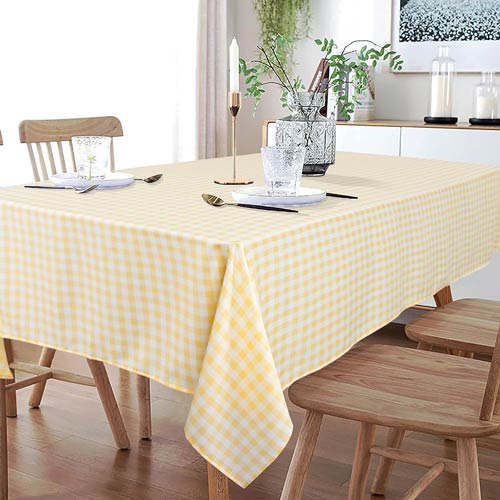
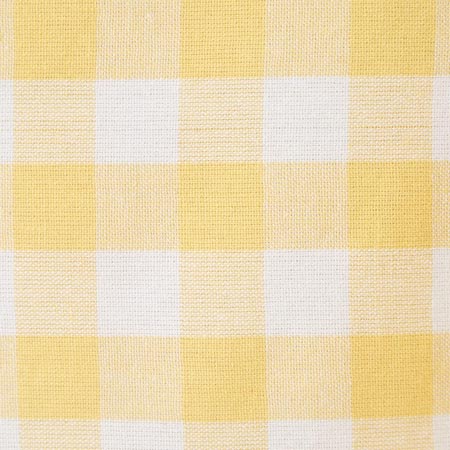
Cotton is a natural fiber and is easily obtainable with low production and processing costs. They are soft, comfortable, highly absorbent, and durable. Moreover, various printing techniques work well on cotton fabric, allowing for multiple designs.
Polyester

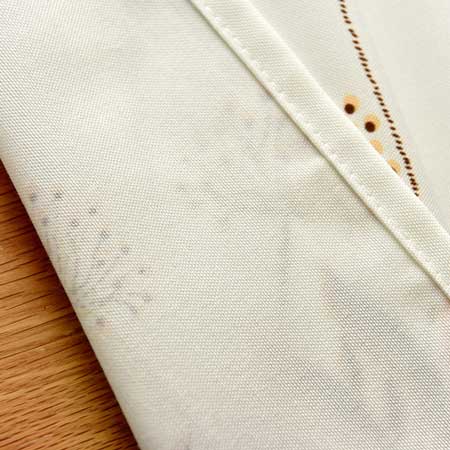
Polyester fiber has many excellent textile properties and is widely used. It is a synthetic fiber that is durable and wrinkle-resistant. Additionally, this material is easy to dye, allowing it to display a wide range of vibrant colors and patterns.
Polycotton Blend
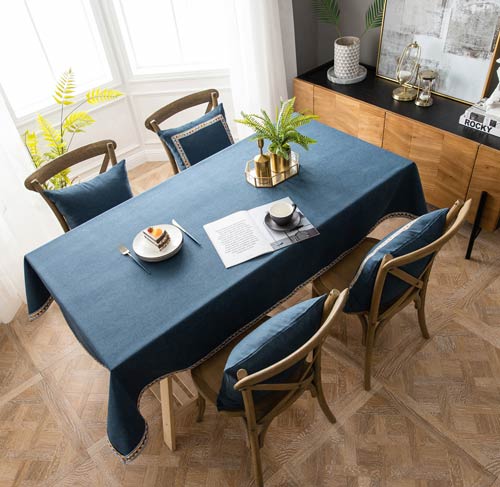
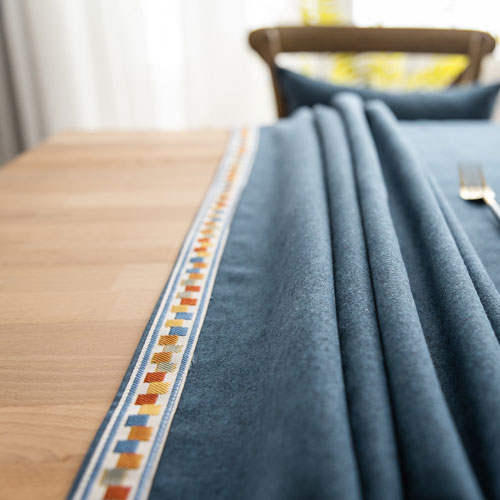
Polycotton blend is a widely chosen option for daily use. The common blend ratio in the market is 60% cotton and 40% polyester or 70% cotton and 30% polyester. This blending ratio can combine the softness and comfort of cotton tablecloths with the durability and easy-care features of polyester tablecloths.
Linen
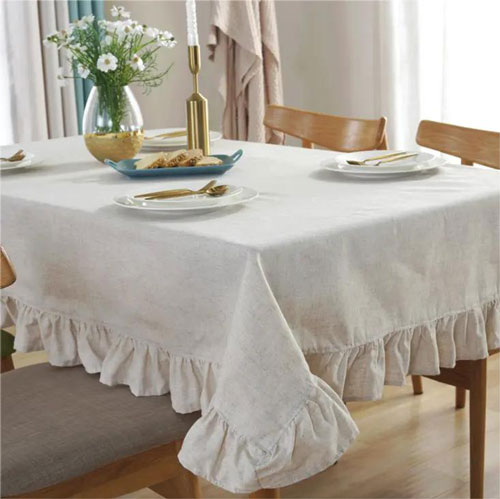
As a natural fiber tablecloth, linen possesses characteristics such as lightness, breathability, high strength, and good moisture absorption. This material is adored for its elegance and comfort as a tablecloth.
Although linen tablecloths may develop wrinkles during everyday use, this is also considered a natural emblem of the fabric’s beauty.
Burlap
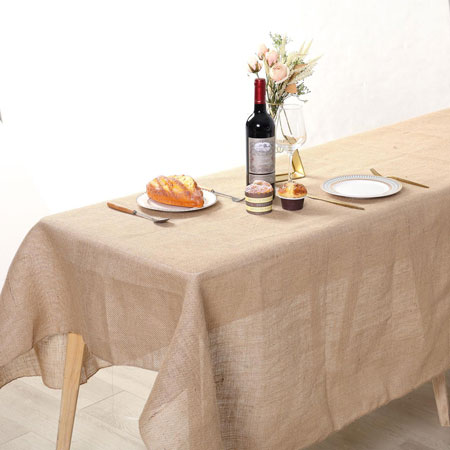
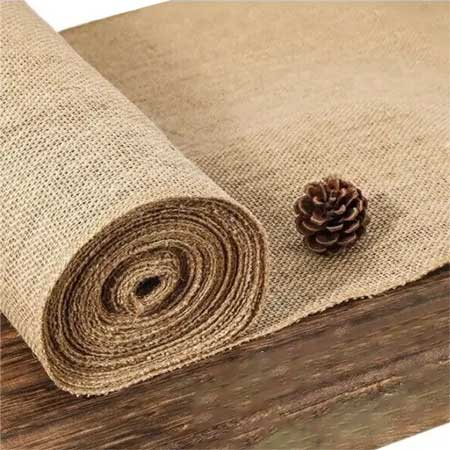
Burlap is a 100% biodegradable and environmentally friendly natural material made from the fibers of the jute plant. It has a coarse surface and is widely used to make hemp threads, ropes, and bags, among other consumer products. Burlap tablecloths are suitable for outdoor activities and farm-style weddings and can be dyed in various colors.
PVC
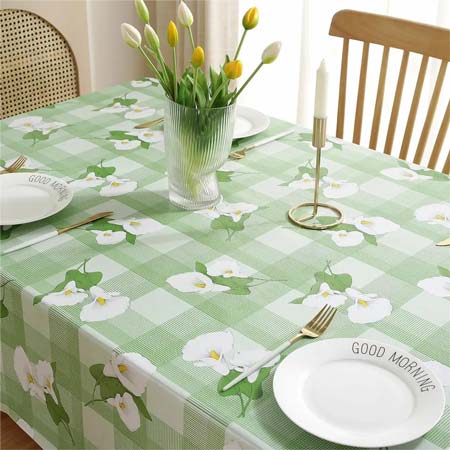
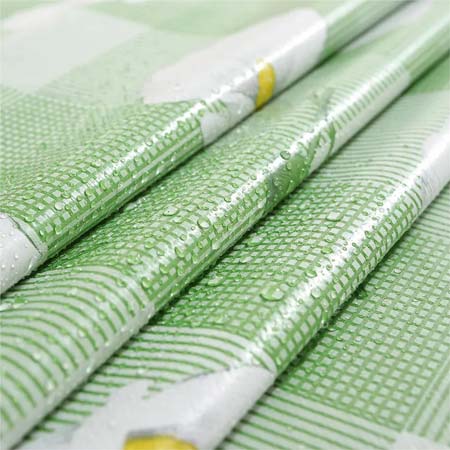
PVC is an affordable material. It is a lightweight and waterproof tablecloth material. Tablecloths made of this material can be printed with patterns and dyed with colors, making them suitable for home dining tables to enhance aesthetics and functionality. Moreover, it is the best material for restaurant tablecloths as it can be easily cleaned.
However, it is advisable to expose the PVC tablecloth to sunlight several times before using it to dissipate any toxins on the surface. Additionally, when placing hot food, use placemats to avoid direct contact between the food and the tablecloth, as high temperatures may accelerate the release of harmful substances.
Lace
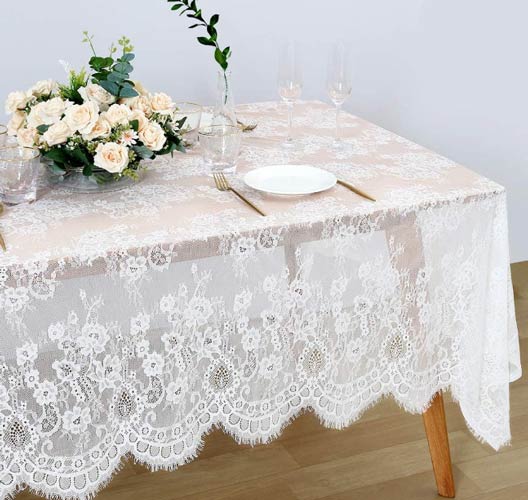
Lace is typically woven with a mesh pattern and is renowned for its delicate and intricate floral designs. This type of tablecloth is mostly used for decoration purposes.
Note that lace is relatively fragile and requires gentle handling. When using and cleaning it, you should be cautious to avoid pulling or rubbing against sharp objects.
Satin
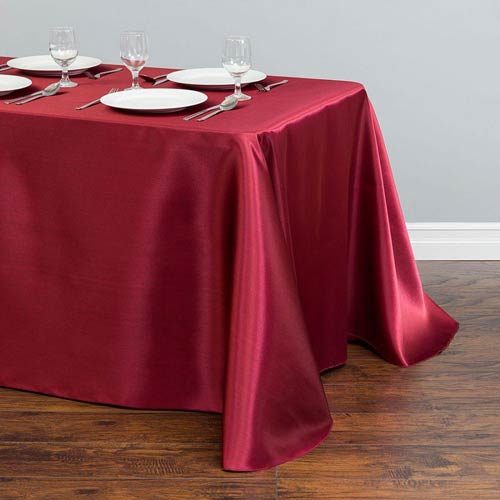
Satin is a very economical fabric that can achieve a similar effect to silk. It is a fabric woven from long filament fibers, possessing smooth, glossy, and soft characteristics. This material is widely used for tablecloths on formal occasions, including commercial events, as it imparts a luxurious ambiance to the entire venue.
Organza
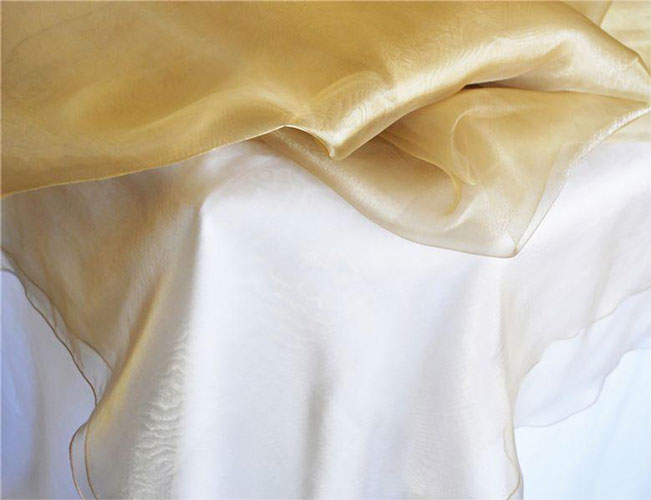
Organza tablecloths are the top choice for weddings, ceremonies, and formal occasions. They are transparent and often paired with solid-colored tablecloths, creating a sparkling effect.
Take care while cleaning, as handwashing and air-drying are necessary. However, the effort is worth it for its elegant look.
Viscose

Viscose fibers are breathable and soft, with good dyeing properties and colorfastness, making them come in a wide range of colors and resistant to fading after washing. However, they have drawbacks of being prone to shrinkage, wrinkles, and deformation. Hence, this material is commonly used for decorative tablecloths.
As a leading sourcing company in China, JingSourcing has helped lots of clients source and custom different types of tablecloths at factory prices.
Whether you want to import tablecloths in any shape, such as round tablecloths, rectangular tablecloths, or other shapes, it is all available. In addition, if you want to dye or print unique patterns, we will also find the most suitable printing method to realize your ideas.

Leave A Comment